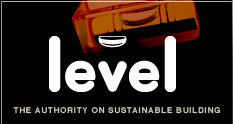Material Use
Specifying efficient use of materials and considering their impact from manufacture to disposal.
Eco-hierarchy Tool
The Eco-hierarchy Tool is used to select construction materials and is aimed at focusing designers on the most important environmental issues relevant to each material.
It follows an eight-step process, beginning with environmental impacts of a building material while it is in use. This is because research has shown that most materials have their biggest impact while the building is in use, but there are exceptions – some materials have relatively bigger impacts during other stages such as extraction, manufacture or disposal.
Building life (use) stage
1. Energy use: Can the material being specified reduce a building’s energy use?
- If no, proceed to step 2.
- If yes (for materials such as glazing and insulation), design to minimise energy use.
2. Occupant health: Might this product compromise the health of building occupants?
- If no, proceed to step 3.
- If yes (for example, some interior furnishings and finishes), specify materials that have no or low levels of off-gassing harmful chemicals that can pollute the indoors.
3. Durability and maintenance: Is this product likely to need replacement, special treatment or repair multiple times during the life of the structure?
- If yes (for example, roofing, coatings, cladding and sealant), consider specifying an alternative material unless the particular material has low environmental impact, is renewable (durable plantation timber, wool-based insulation, cork, jute, bamboo) or is able to be reused or recycled easily (for example, grade 1 and 2 plastics).
Manufacturing stage
4. Hazardous byproducts: Are significant toxic substances created during manufacture, during installation, after the material is installed or when it is removed that are a risk to either the environment or worker (and occupant) health?
- If no, proceed to step 5.
- Where toxic materials are either generated in large quantities or in small but uncontrolled quantities (for example, smelting of zinc, production of petrochemicals), consider specifying an alternative building material with less impact or specifying that the material is sourced from a company with higher environmental standards.
5. Energy use: Is the manufacturing process energy-intensive?
- If no, proceed to step 6.
- If yes (for example, aluminium, copper and plastics), try sourcing from producers using renewable energy sources.
6. Waste from manufacturing: Are large amounts of waste generated relative to the quantity of product manufactured or does the waste generated (even if small) create pollution or degrade the environment?
- If no, proceed to step 7.
- If yes (for example, tailings and overburden from metal mining), specify an alternative material or source from a company with a progressive recycling programme. (Designing a building to suit the readily available sizes or modules of the specified materials and careful site management will significantly reduce waste on site.)
Raw material source
7. Resource limitations: Are any of the component materials being specified from rare or endangered resources?
- If no, proceed to step 8.
- If yes (for example, native New Zealand timbers and many overseas-sourced hardwoods), avoid specifying these products unless they can be sourced from recycled materials or from a sustainable managed source that has recognised certification (for example, imported hardwoods certified by the Forest Stewardship Council or timber certified under the Programme for the Endorsement of Forest Certification).
8. Impacts of resource extraction: Are there significant eco-impacts from the process of mining or harvesting the raw materials?
- If yes (for example, damage from certain timber harvesting practices, water run-off from a quarry), seek a supplier of material from recycled stock or those with credible third-party certification.
Updated: 06 May 2020

